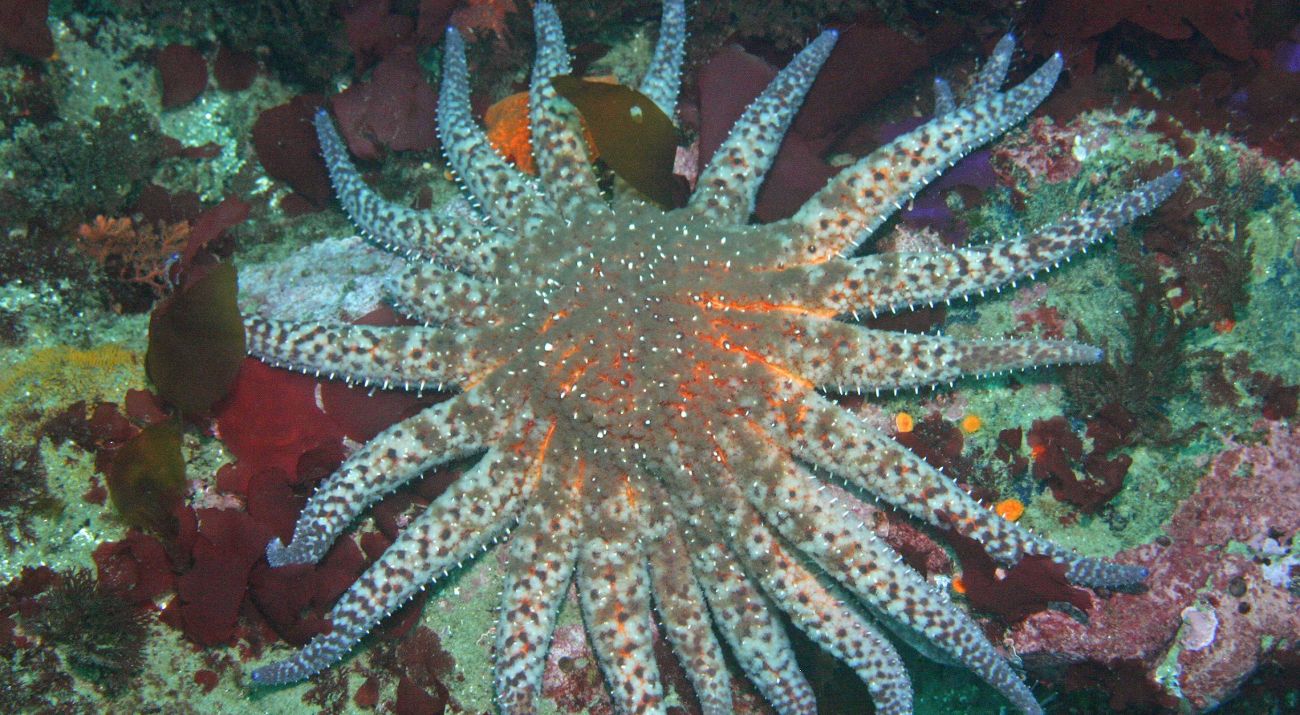The Nature Conservancy on Proposed Listing of Sunflower Sea Star as Threatened Under Endangered Species Act
Media Contacts
-
Armin Mahramzadeh
Media Contact
The Nature Conservancy
Phone: (818) 501-0501
Email: a.mahramzadeh@TNC.ORG
Today the National Oceanic and Atmospheric Administration (NOAA) proposed that the imperiled Sunflower Sea Star (Pycnopodia helianthoides) warrants federal protection as Threatened under the U.S. Endangered Species Act. The proposed federal listing was catalyzed by research led by scientists at Oregon State University, The Nature Conservancy, and more than 60 partner institutions documenting the population crash of the species. The proposed listing also follows the release of the Conservancy’s Roadmap to Recovery for the Sunflower Sea Star.
In response to this announcement, Norah Eddy, Kelp Project Director, Ocean Program at The Nature Conservancy in California, released the following statement:
“Today’s proposed listing recognizes the elevated risk of extinction the Sunflower Sea Star faces. If the proposed rule is finalized, an ESA listing will provide additional resources to protect and recover this critical marine species after its global population dramatically declined over the past decade. The disappearance of this important predator has contributed to explosions in purple urchin populations in many regions and associated declines in kelp forests, depleting habitat for other important species and making this ecosystem less resilient to other stressors it is facing. Species recovery is mission-critical. We look forward to continuing to work with the federal government to continue vital efforts to recover the Sunflower Sea Star should this proposed rule be finalized and the species listed as Threatened.”
Quote: Norah Eddy
If the proposed rule is finalized, an ESA listing will provide additional resources to protect and recover this critical marine species after its global population dramatically declined over the past decade.
Populations of the sunflower sea star, an animal once abundant in marine waters from Alaska to Baja California, experienced dramatic crashes in response to a marine wildlife epidemic event – referred to as sea star wasting disease – that began in 2013. Research suggests that as many as 5.75 billion animals died from the disease. The species suffered over 99% declines in most of the southern half of its range from Baja California, Mexico, to Cape Flattery, Washington, USA.
Sunflower sea stars are an important predator of kelp-eating sea urchins and, with the significant loss of these sea stars, purple urchin populations have now exploded in many regions. This overabundance of urchin is linked to a significant decline in kelp forests in multiple regions in recent years. Kelp forests are already facing increased pressure from marine heatwave events and other stressors; taken together, these threats contribute to an uncertain future for kelp forest ecosystems which provide critical habitat for thousands of marine animals and support coastal economies.
The Nature Conservancy is a global conservation organization dedicated to conserving the lands and waters on which all life depends. Guided by science, we create innovative, on-the-ground solutions to our world’s toughest challenges so that nature and people can thrive together. We are tackling climate change, conserving lands, waters and oceans at an unprecedented scale, providing food and water sustainably and helping make cities more resilient. The Nature Conservancy is working to make a lasting difference around the world in 81 countries and territories (40 by direct conservation impact and 41 through partners) through a collaborative approach that engages local communities, governments, the private sector, and other partners. To learn more, visit nature.org or follow @nature_press on X.
